
Niklas Kempynck
@niklaskemp.bsky.social
PhD Student at the Stein Aerts Lab of Computational Biology. Studying brain genomics
Reposted by Niklas Kempynck
Relieved to finally post my whole developing brain evolutionary "theory of everything" preprint!
www.biorxiv.org/content/10.1...
www.biorxiv.org/content/10.1...

ANTIPODE Provides a Global View of Cell Type Homology and Transcriptomic Divergence in the Developing Mammalian Brain
Diverse neurons and glia are generated in conserved spatial and temporal sequences during mammalian brain development. Divergence in gene regulatory networks can alter brain composition, scaling, timi...
www.biorxiv.org
October 20, 2025 at 2:50 AM
Relieved to finally post my whole developing brain evolutionary "theory of everything" preprint!
www.biorxiv.org/content/10.1...
www.biorxiv.org/content/10.1...
Reposted by Niklas Kempynck
We have two open positions for a ML and a LLM engineer to launch a machine learning expertise unit in our center @vibai.bsky.social, see vib.ai/en/opportuni...
vib.ai
September 23, 2025 at 11:21 AM
We have two open positions for a ML and a LLM engineer to launch a machine learning expertise unit in our center @vibai.bsky.social, see vib.ai/en/opportuni...
Reposted by Niklas Kempynck
We will have our next community meeting on Tuesday, 2025-09-16 at 18:00 CEST! Niklas Kempynck will be presenting on CREsted, a package for training enhancer models on scATAC-seq data.
(Zoom registration link and more information in thread!)
🧵
(Zoom registration link and more information in thread!)
🧵
September 10, 2025 at 3:02 PM
We will have our next community meeting on Tuesday, 2025-09-16 at 18:00 CEST! Niklas Kempynck will be presenting on CREsted, a package for training enhancer models on scATAC-seq data.
(Zoom registration link and more information in thread!)
🧵
(Zoom registration link and more information in thread!)
🧵
Reposted by Niklas Kempynck
I wrote a quick application note on Tomtom-lite, a Python implementation of the Tomtom algorithm for comparing PWMs against each other. This implementation can be 10-1000x faster and, as a Python function, can be integrated into your workflows easier.
www.biorxiv.org/content/10.1...
www.biorxiv.org/content/10.1...

Tomtom-lite: Accelerating Tomtom enables large-scale and real-time motif similarity scoring
Summary Pairwise sequence similarity is a core operation in genomic analysis, yet most attention has been given to sequences made up of discrete characters. With the growing prevalence of machine lear...
www.biorxiv.org
June 3, 2025 at 6:02 PM
I wrote a quick application note on Tomtom-lite, a Python implementation of the Tomtom algorithm for comparing PWMs against each other. This implementation can be 10-1000x faster and, as a Python function, can be integrated into your workflows easier.
www.biorxiv.org/content/10.1...
www.biorxiv.org/content/10.1...
Reposted by Niklas Kempynck
One thousand candidate enhancers tested in vivo in the mouse brain! A massive resource and oh so useful as validation set for genome-wide enhancer prediction methods. Super fun to be involved in one of the papers: ‘the prediction challenge paper’ by Nelson&Niklas et al www.cell.com/cell-genomic...
May 21, 2025 at 4:50 PM
One thousand candidate enhancers tested in vivo in the mouse brain! A massive resource and oh so useful as validation set for genome-wide enhancer prediction methods. Super fun to be involved in one of the papers: ‘the prediction challenge paper’ by Nelson&Niklas et al www.cell.com/cell-genomic...
Check out our work on evaluating methods for predicting in vivo cell enhancer activity in the mouse cortex! Combined, scATAC peak specificity and sequence-based CREsted predictions gave the best predictive performance, aiming to advance genetic tool design for cell targeting in the brain.
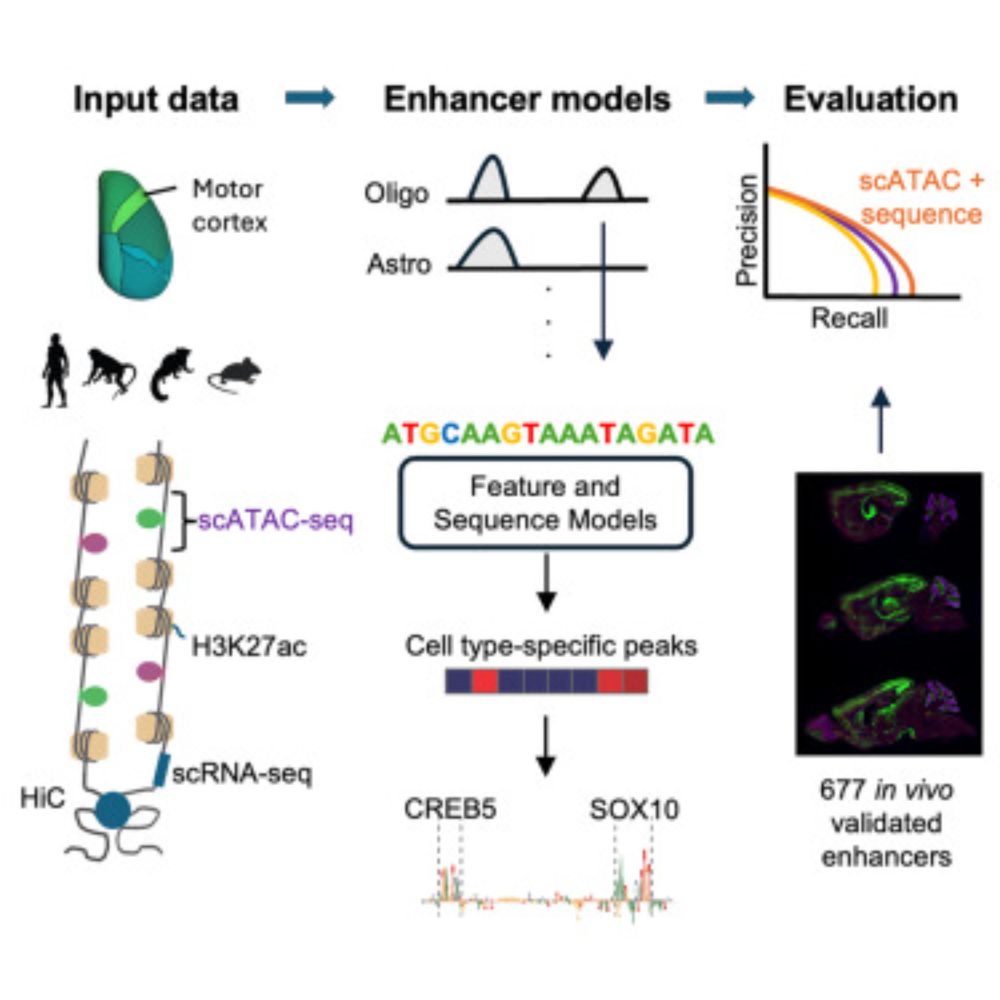
Evaluating methods for the prediction of cell-type-specific enhancers in the mammalian cortex
Johansen et al. report the results of a community challenge to predict functional
enhancers targeting specific brain cell types. By comparing multi-omics machine learning
approaches using in vivo data...
www.cell.com
May 21, 2025 at 4:45 PM
Check out our work on evaluating methods for predicting in vivo cell enhancer activity in the mouse cortex! Combined, scATAC peak specificity and sequence-based CREsted predictions gave the best predictive performance, aiming to advance genetic tool design for cell targeting in the brain.
Reposted by Niklas Kempynck
Calling someone bird-brained is, in fact, a way of calling someone highly intelligent. @yaseminsaplakoglu.bsky.social reports: www.quantamagazine.org/intelligence...
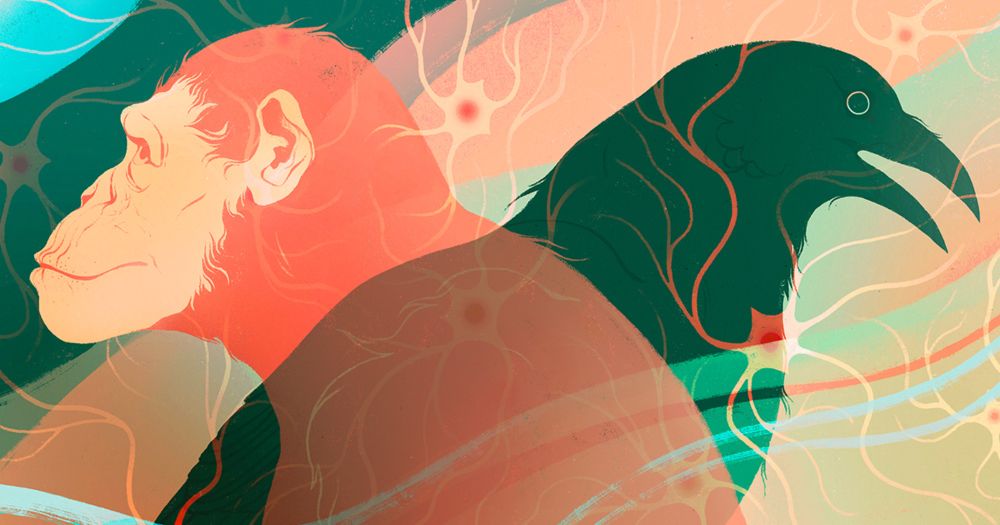
Intelligence Evolved at Least Twice in Vertebrate Animals | Quanta Magazine
Complex neural circuits likely arose independently in birds and mammals, suggesting that vertebrates evolved intelligence multiple times.
www.quantamagazine.org
April 7, 2025 at 2:28 PM
Calling someone bird-brained is, in fact, a way of calling someone highly intelligent. @yaseminsaplakoglu.bsky.social reports: www.quantamagazine.org/intelligence...
Reposted by Niklas Kempynck
Very proud of two new preprints from the lab:
1) CREsted: to train sequence-to-function deep learning models on scATAC-seq atlases, and use them to decipher enhancer logic and design synthetic enhancers. This has been a wonderful lab-wide collaborative effort. www.biorxiv.org/content/10.1...
1) CREsted: to train sequence-to-function deep learning models on scATAC-seq atlases, and use them to decipher enhancer logic and design synthetic enhancers. This has been a wonderful lab-wide collaborative effort. www.biorxiv.org/content/10.1...

CREsted: modeling genomic and synthetic cell type-specific enhancers across tissues and species
Sequence-based deep learning models have become the state of the art for the analysis of the genomic regulatory code. Particularly for transcriptional enhancers, deep learning models excel at decipher...
www.biorxiv.org
April 4, 2025 at 9:04 AM
Very proud of two new preprints from the lab:
1) CREsted: to train sequence-to-function deep learning models on scATAC-seq atlases, and use them to decipher enhancer logic and design synthetic enhancers. This has been a wonderful lab-wide collaborative effort. www.biorxiv.org/content/10.1...
1) CREsted: to train sequence-to-function deep learning models on scATAC-seq atlases, and use them to decipher enhancer logic and design synthetic enhancers. This has been a wonderful lab-wide collaborative effort. www.biorxiv.org/content/10.1...
Also check out Hannah’s thread on our latest preprint on HyDrop v2, an open-source platform for scATAC-sequencing, and a great, cost-efficient way of generating data for S2F models. 🙌
Our new preprint is out! We optimized our open-source platform, HyDrop (v2), for scATAC sequencing and generated new atlases for the mouse cortex and Drosophila embryo with 607k cells. Now, we can train sequence-to-function models on data generated with HyDrop v2!
www.biorxiv.org/content/10.1...
www.biorxiv.org/content/10.1...
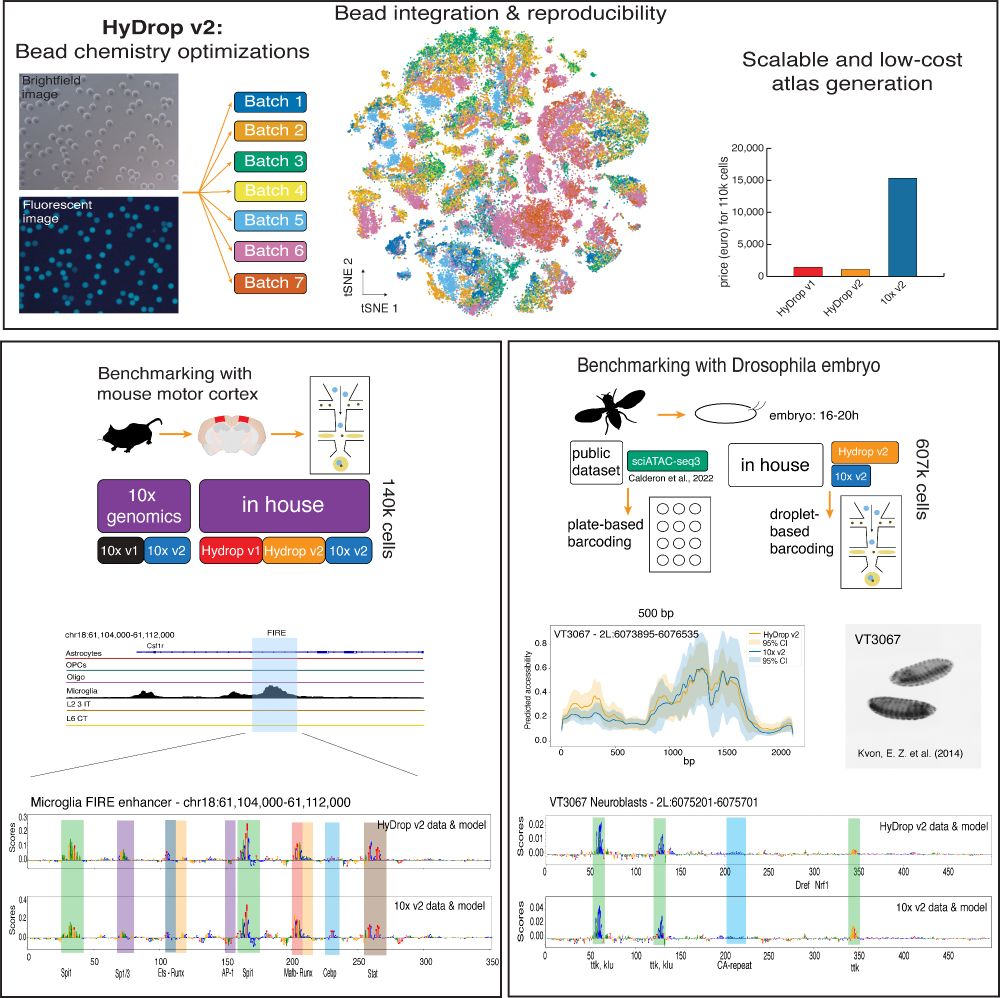
April 4, 2025 at 10:37 AM
Also check out Hannah’s thread on our latest preprint on HyDrop v2, an open-source platform for scATAC-sequencing, and a great, cost-efficient way of generating data for S2F models. 🙌
We released our preprint on the CREsted package. CREsted allows for complete modeling of cell type-specific enhancer codes from scATAC-seq data. We demonstrate CREsted’s robust functionality in various species and tissues, and in vivo validate our findings: www.biorxiv.org/content/10.1...

April 3, 2025 at 2:30 PM
We released our preprint on the CREsted package. CREsted allows for complete modeling of cell type-specific enhancer codes from scATAC-seq data. We demonstrate CREsted’s robust functionality in various species and tissues, and in vivo validate our findings: www.biorxiv.org/content/10.1...
Reposted by Niklas Kempynck
Very excited to share our new preprint together with @daniedaaboul.bsky.social, where we studied the gene regulatory code that hippocampal granule cells (GCs) use during synapse formation (1/n)
A dynamic gene regulatory code drives synaptic development of hippocampal granule cells https://www.biorxiv.org/content/10.1101/2025.03.27.645686v1
March 31, 2025 at 5:58 AM
Very excited to share our new preprint together with @daniedaaboul.bsky.social, where we studied the gene regulatory code that hippocampal granule cells (GCs) use during synapse formation (1/n)
Reposted by Niklas Kempynck
How does gene regulation shape brain evolution? Our new preprint dives into this question in the context of mammalian cerebellum development! rb.gy/dbcxjz
Led by @ioansarr.bsky.social, @marisepp.bsky.social and @tyamadat.bsky.social, in collaboration with @steinaerts.bsky.social
Led by @ioansarr.bsky.social, @marisepp.bsky.social and @tyamadat.bsky.social, in collaboration with @steinaerts.bsky.social
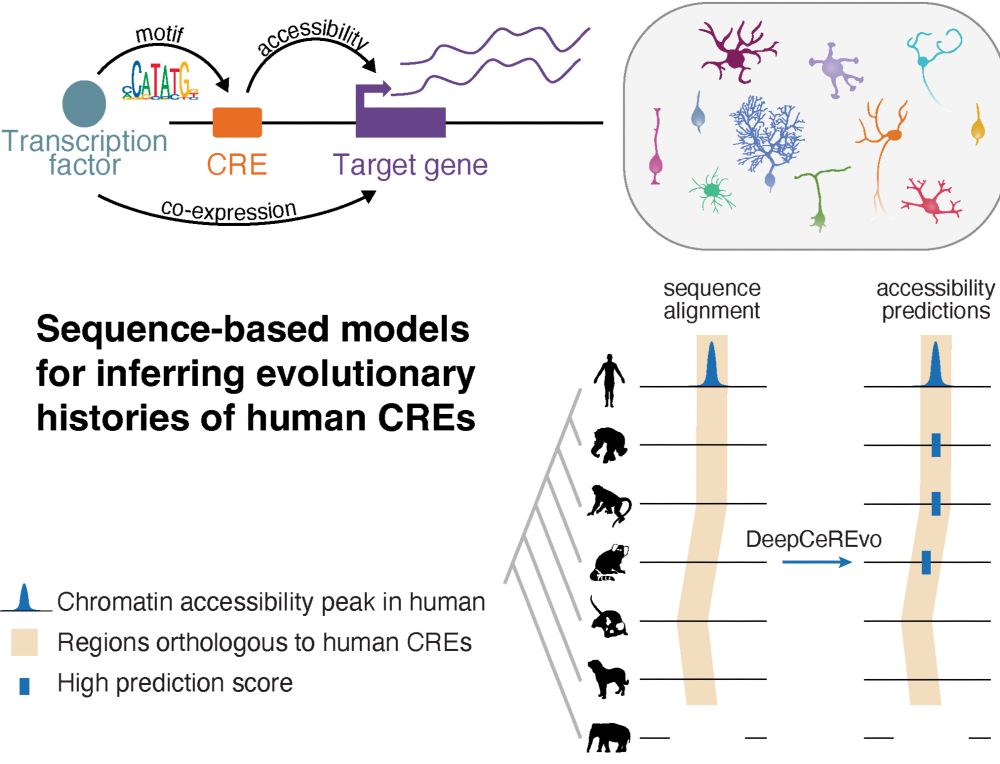
March 16, 2025 at 10:31 AM
How does gene regulation shape brain evolution? Our new preprint dives into this question in the context of mammalian cerebellum development! rb.gy/dbcxjz
Led by @ioansarr.bsky.social, @marisepp.bsky.social and @tyamadat.bsky.social, in collaboration with @steinaerts.bsky.social
Led by @ioansarr.bsky.social, @marisepp.bsky.social and @tyamadat.bsky.social, in collaboration with @steinaerts.bsky.social
Reposted by Niklas Kempynck
The latest Discover ASAP episode dives into "Cell Type Directed Design of Synthetic Enhancers," a study published in Nature by CRN Team Voet. They discuss how machine learning enables precise enhancer design for targeted gene expression 🧬
Watch: www.youtube.com/watch?v=Qcms...
Watch: www.youtube.com/watch?v=Qcms...
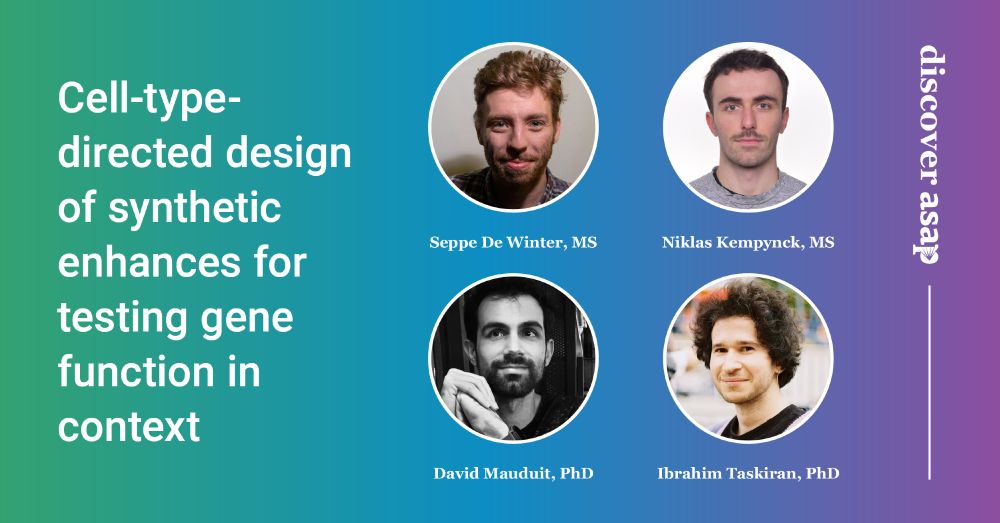
February 13, 2025 at 4:47 PM
The latest Discover ASAP episode dives into "Cell Type Directed Design of Synthetic Enhancers," a study published in Nature by CRN Team Voet. They discuss how machine learning enables precise enhancer design for targeted gene expression 🧬
Watch: www.youtube.com/watch?v=Qcms...
Watch: www.youtube.com/watch?v=Qcms...
Reposted by Niklas Kempynck
We wrote a review article on modelling and design of transcriptional enhancers using sequence-to-function models.
From conventional machine learning methods to CNNs and using models as oracles/generative AI for synthetic enhancer design!
@natrevbioeng.bsky.social
www.nature.com/articles/s44...
From conventional machine learning methods to CNNs and using models as oracles/generative AI for synthetic enhancer design!
@natrevbioeng.bsky.social
www.nature.com/articles/s44...
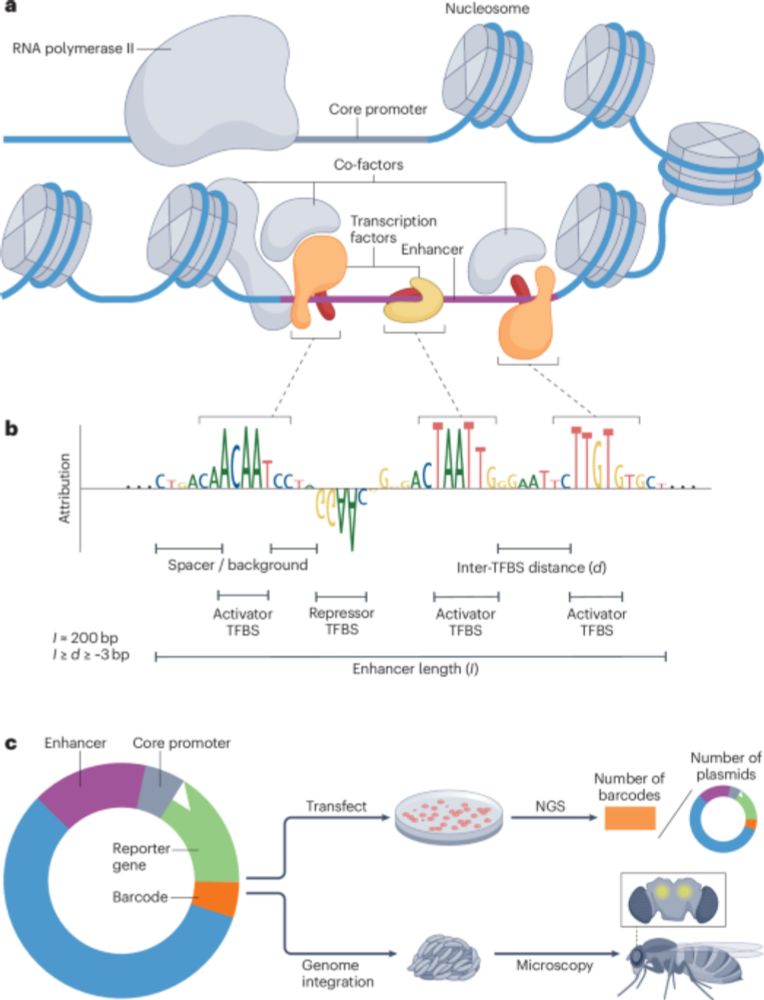
Modelling and design of transcriptional enhancers - Nature Reviews Bioengineering
Enhancers are genomic elements critical for regulating gene expression. In this Review, the authors discuss how sequence-to-function models can be used to unravel the rules underlying enhancer activit...
www.nature.com
February 28, 2025 at 2:45 PM
We wrote a review article on modelling and design of transcriptional enhancers using sequence-to-function models.
From conventional machine learning methods to CNNs and using models as oracles/generative AI for synthetic enhancer design!
@natrevbioeng.bsky.social
www.nature.com/articles/s44...
From conventional machine learning methods to CNNs and using models as oracles/generative AI for synthetic enhancer design!
@natrevbioeng.bsky.social
www.nature.com/articles/s44...
Reposted by Niklas Kempynck
This has been a fantastic adventure - to capture the genomic regulatory code underlying brain cell types (using deep learning models trained on chromatin accessibility), and then use these models to compare cell types between the bird and mammalian brain
Just very happy to have our paper out today! A big thanks to all our co-authors, and to Nikolai and @steinaerts.bsky.social for the teamwork over the past years. If you are interested in using our models for cross-species enhancer studies, check out crested.readthedocs.io/en/stable/mo... 🙂
In a new study, Nikolai Hecker, Niklas Kempynck et al. in the team of @steinaerts.bsky.social explore 300 million years of brain evolution through the lens of enhancer codes.
www.science.org/doi/10.1126/...
www.science.org/doi/10.1126/...
February 14, 2025 at 12:06 PM
This has been a fantastic adventure - to capture the genomic regulatory code underlying brain cell types (using deep learning models trained on chromatin accessibility), and then use these models to compare cell types between the bird and mammalian brain
Just very happy to have our paper out today! A big thanks to all our co-authors, and to Nikolai and @steinaerts.bsky.social for the teamwork over the past years. If you are interested in using our models for cross-species enhancer studies, check out crested.readthedocs.io/en/stable/mo... 🙂
In a new study, Nikolai Hecker, Niklas Kempynck et al. in the team of @steinaerts.bsky.social explore 300 million years of brain evolution through the lens of enhancer codes.
www.science.org/doi/10.1126/...
www.science.org/doi/10.1126/...
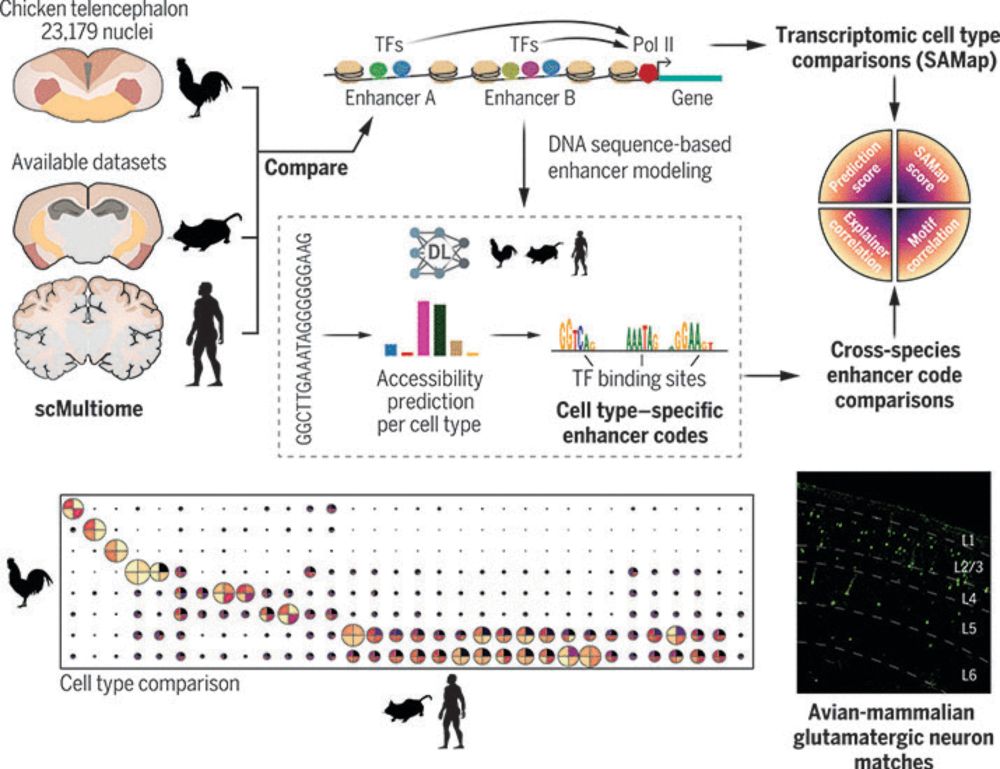
Enhancer-driven cell type comparison reveals similarities between the mammalian and bird pallium
Combinations of transcription factors govern the identity of cell types, which is reflected by genomic enhancer codes. We used deep learning to characterize these enhancer codes and devised three metr...
www.science.org
February 14, 2025 at 10:08 AM
Just very happy to have our paper out today! A big thanks to all our co-authors, and to Nikolai and @steinaerts.bsky.social for the teamwork over the past years. If you are interested in using our models for cross-species enhancer studies, check out crested.readthedocs.io/en/stable/mo... 🙂

